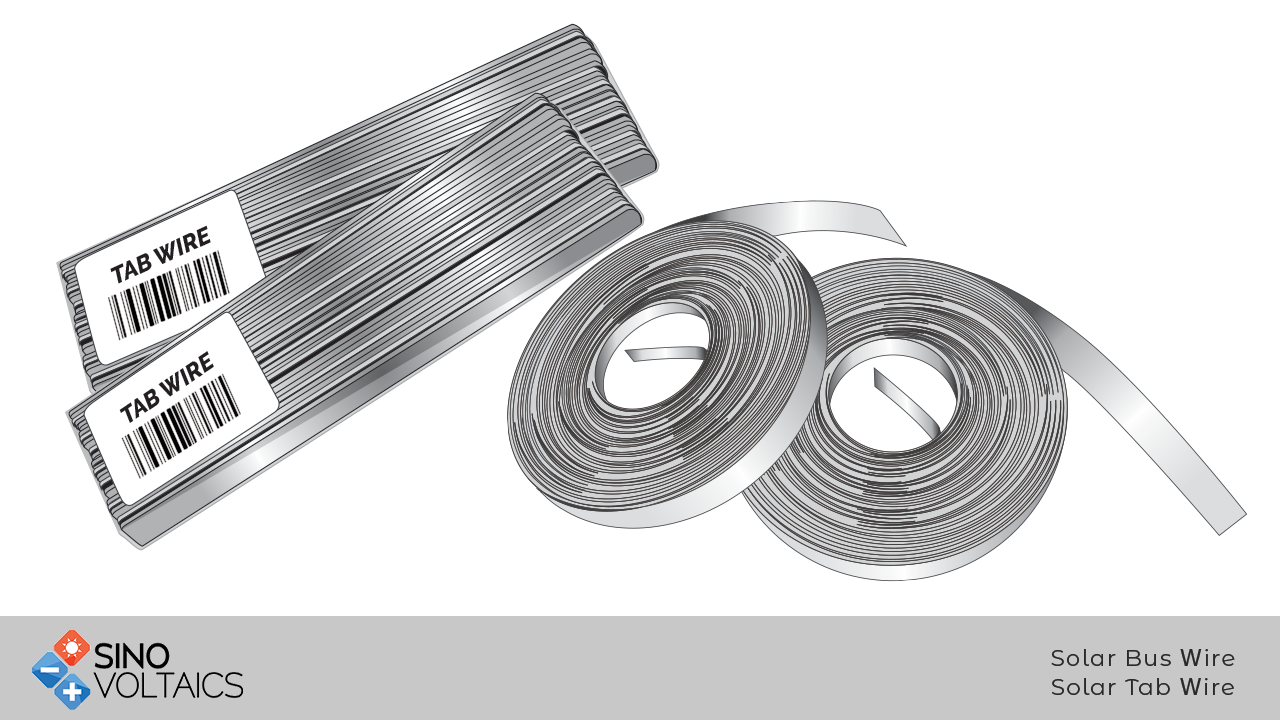Bus Wire and Tab Wire
Individual solar junctions produce low voltage. In order to obtain suitable voltages cells have to be connected in series forming rows. Then the ends these rows are connected in parallel to obtain the desired current capability. Tab wire is used to connect individual cells in series, and the bus wireconnects these rows in parallel. Tab wire or tabbing wire is flat copper wire. It is normally prepared by rolling round copper wire into a flat shape. The copper core is given a solder coat by the manufacturer to allow easy soldering to the cells. This precoated layer of solder is not sufficient for soldering to cells. Additional solder is necessary during soldering to cells as in case of normal round wire. Various thicknesses and widths are available. Widths from about 1 mm to about 2 mm are available. Thicknesses are from about one tenth of a millimeter to about two tenths of a millimeter.  The bus wire is used to connect theses rows in parallel. It is also, like the tabbing wire, made of a flat cross section. Since it has to carry a sum of the row currents, it has to have a larger thickness and width to allow less resistance per unit length than the tabbing wire. Like tabbing wire it is also made from round copper wire by a rolling process and is coated with a layer of solder to permit easy soldering. Normally available thickness is from about 0.15 mm to about 0.35 mm. It is available in widths of about 4 mm to about 6 mm. As a matter of fact tabbing wire and bus wire for solar panels are generically the same. Only, the bus wire has to carry the bus current which is many times larger than the row current. Hence the bus wire has to be thicker and broader. Both are sold in rolls of various sizes.
The bus wire is used to connect theses rows in parallel. It is also, like the tabbing wire, made of a flat cross section. Since it has to carry a sum of the row currents, it has to have a larger thickness and width to allow less resistance per unit length than the tabbing wire. Like tabbing wire it is also made from round copper wire by a rolling process and is coated with a layer of solder to permit easy soldering. Normally available thickness is from about 0.15 mm to about 0.35 mm. It is available in widths of about 4 mm to about 6 mm. As a matter of fact tabbing wire and bus wire for solar panels are generically the same. Only, the bus wire has to carry the bus current which is many times larger than the row current. Hence the bus wire has to be thicker and broader. Both are sold in rolls of various sizes.
